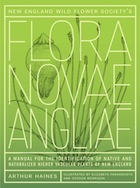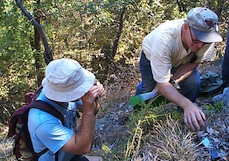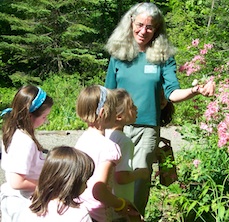About Go Botany
A new flora for New England

- Go Botany is a four-year project funded by the National Science Foundation and aims to open plant study to a larger and more diverse segment of the population.
- The project builds upon the work in our printed manual, Flora Novae Angliae, by research botanist Arthur Haines. This manual is the first comprehensive scientific reference published in the last 25 years on the region's plant species, and is available for purchase at Native Plant Trust’s garden shops.
The Go Botany toolkit

- Our Simple Key is an easy to use plant identification tool and contains 1,200 of the most common species in New England. Aimed at beginners and professionals, it works by the user answering questions, which narrows down the matching selection of plants. Get started!
- Using our Advanced ID Tools, you can use a traditional, albeit electronic, Dichotomous Key to identify genera within families and species within genera, and more than 3,500 species, subspecies and varieties of plants. Or you can use our Full Key, which works like the Simple Key, but like the Dichotomous Key, contains more than 3,500 species.
- Exploring our species pages, Acer rubrum for example, allows you to learn about the habitats, characteristics, uses of plants, to view photos and maps of their distributions, and much more.
Resources for teachers

- Go Botany is designed for students and informal learners age 15 and older, from beginners to professionals. But educators can incorporate our tools into lessons for all ages. Develop your own curricula, lab modules, and field workshops using Go Botany.
- New England Wild Flower Society is teaming up with three partners, Montshire Museum of Science, Yale Peabody Museum of Natural History, and the Chewonki Foundation to create customized floras, educational displays, and teaching tools.
- Share your ideas with other educators using PlantShare and posting to our Teaching page.
- In 2012 and 2013, Native Plant Trust (then named New England Wild Flower Society) trained educators throughout New England on how to use Go Botany.
Technical resources
- Go Botany uses a collection of mature and powerful open source technologies. The application is written in the Python programming language, using the web framework Django and the PostgreSQL database system.
- The Go Botany application itself is also open source. The source code is managed and available on GitHub and has attracted the attention of various organizations. One, the Smithsonian Environmental Research Center, working with a group of web developers, used the Go Botany source code to develop the site Go Orchids.
- In addition, without the need to make source code modifications or hire web developers, our Go Botany server has the capability to host a customized Simple Key, one that includes a subset of New England species. For example, for their Early Spring: Henry Thoreau and Climate Change exhibit, the Concord Museum worked with us to develop the Go Botany Concord Flora, a comprehensive list of and identification tool for the plants of Concord, Massachusetts.
- Interested in knowing more? Email us at gobotany [at] nativeplanttrust [dot] org.
